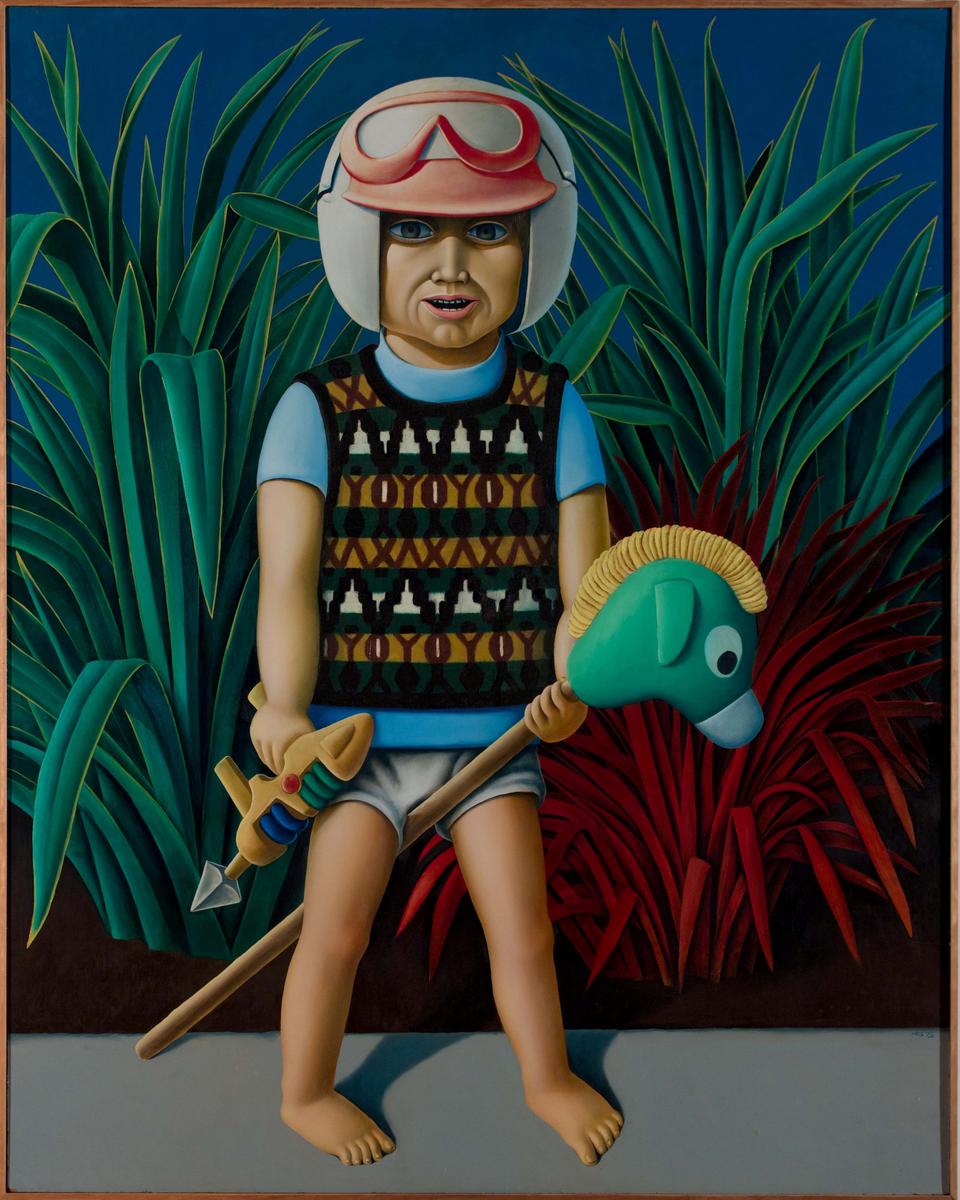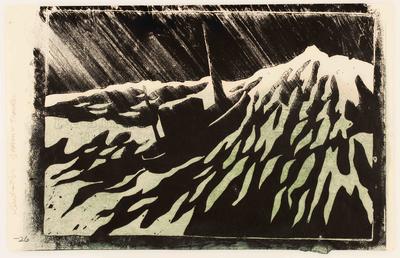Joseph as the Lone Ranger
-
Michael Smither
b.1939

Title
Joseph as the Lone Ranger
Details
| Production Date | 1973 |
|---|---|
| Collection(s) | Collection Govett-Brewster Art Gallery, New Plymouth. Purchased from Monica Brewster Bequest with the assistance of the Queen Elizabeth II Arts Council of New Zealand in 1974. |
| Accession Number | 74/3 |
| Media | Oil on board |
| Measurements | Sight size: 1530 x 1220mm |
About
Michael Smither’s home and family are subjects that he returned to again and again in his paintings of the 1960s and 1970s. The portraits of his young children that have become iconic images in Smither’s oeuvre attracted criticism when they were first shown. As clear-eyed views of strongly independent and active children, the paintings are both tender and candid, their frankness contrasting with comfortably sentimental views of childhood.
Joseph as the Lone Ranger captures a moment of play in the life of Smither’s son. Equipped with hobby horse, plastic ray gun and helmet, Joseph is in his own mind the living embodiment of the Lone Ranger. Smither’s painting seems to ask, and why not? The flax bushes that form a backdrop for Joseph’s performance are luridly coloured, reflecting the saturated, intensely sensory world of childhood play. However, the flax seems dangerously spiky, and Joseph is backed up against it as if on a stage, pinned by the spotlight of adult attention. There is a tension here, and abrasiveness, in the contact between the worlds of child and adult.
The Lone Ranger is a link between Smither’s boyhood and his son’s. Born in 1939, Smither would have been enthralled by the popular radio and television series in its height in the early 1950s, whereas Joseph would have caught re-runs in the 1970s. The immortal figure of the Lone Ranger telescopes time, and the gap between two generations is compressed as Smither witnesses his son’s playtime fantasy. Looking in from the outside of childhood, Smither celebrates Joseph’s perfect obliviousness to the boundaries of his imaginative world. Innocence and knowledge co-exist in this moment, and in the look that passes between father and son.


